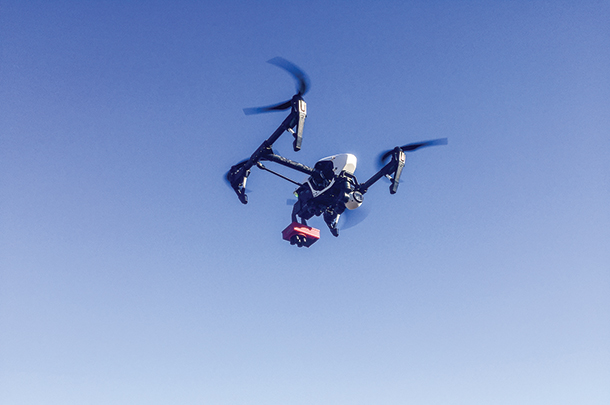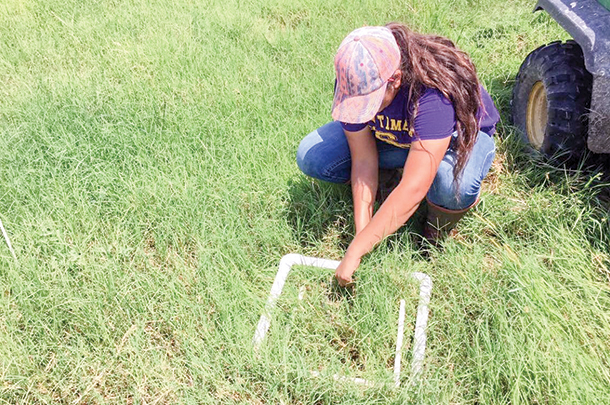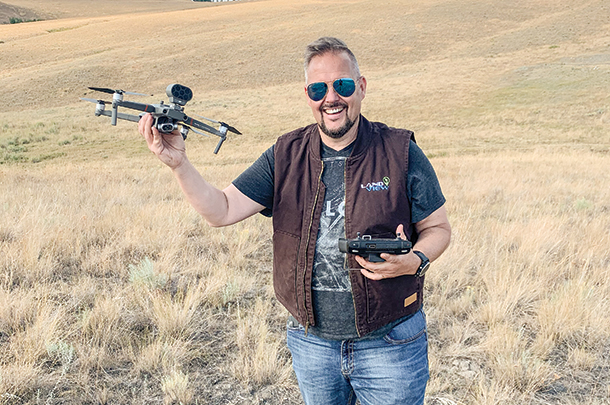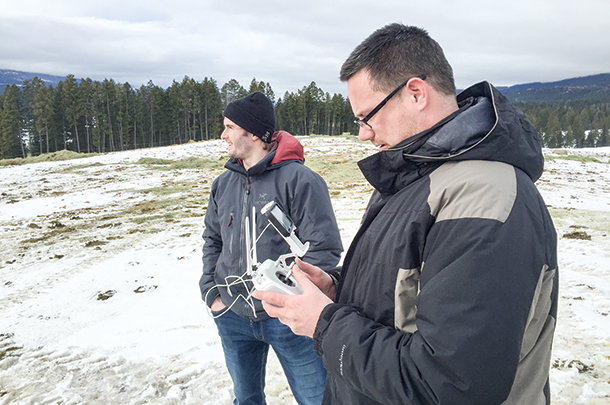Just a decade ago, drones were a novelty in agriculture. Dr. Humberto Perotto, associate professor at Texas A&M University – Kingsville says the world of drones has exploded in the past five years. “Technology has improved and capability of drones has greatly increased. A few years ago, we thought maybe we could use drones for mapping vegetation cover and link the data from imagery to the amount of forage mass available or get better estimates of crop and pasture yields. Today, we are doing that,” he says.
Uses in forage management
Jamie Foster, professor of forage agronomy with Texas A&M AgriLife Research, says her research is trying to improve estimates of herbage mass, the amount of forage in certain pastures. “We work with engineers and computer scientists to find ways to use this information so our data can be analyzed to help with decision-making for the landowner.” This information can aid pasture management decisions like whether changes are needed in use or stocking rate, when to move livestock, or when to address invasive species.
 A drone carries multispectral cameras. Photo provided by John Church.
A drone carries multispectral cameras. Photo provided by John Church.
A drone can collect photos and send them online to a server. A couple hours later, you can have all your images ready to prepare maps. Perotto says this is helpful for brush control or finding patches of invasive weeds. Producers might also see areas that are being degraded or where erosion is a problem. This information can be captured with a drone more easily than viewing it on the ground from a horizontal perspective.
“You can send the drone up and get the imagery to see where a gully starts and the extent of it, or see where new patches of weeds, invasive grasses or woody encroachments are showing up,” says Perotto.
 Student Brittany Garza installs quadrants in the pasture. Photo provided by Jamie Foster.
Student Brittany Garza installs quadrants in the pasture. Photo provided by Jamie Foster.
Foster says data is presented in a red-green-blue picture, like we use on cameras or phones to take a photo. “Anything in that image that you can see with your eye, the computer algorithm can pick out those differences. Drone images can be used to determine the maturity of a grass and the different forages growing,” she says.
Drone technology has evolved a lot in the past five years. “Battery life is longer, and we can cover more acreage in one flight. The sensors the drone carries are much less expensive and lighter weight, so you can carry more sensors on the drone. The drone can also fly longer if it is not carrying as much weight,” Foster explains.
Livestock monitoring
Drones can be utilized to locate and check animals in a pasture. “Infrared temperature sensors can be calibrated to determine the temperature of the animal, to know if there are health issues,” says Foster. Drones can also be used to identify change of color on heat-detection tags on cows.
 John Church holds a drone. | Photo provided by John Church.
John Church holds a drone. | Photo provided by John Church.
John Church, associate professor in the natural resource sciences department at Thompson Rivers University, Kamloops, British Columbia, has been putting thermal cameras on drones to locate animals under trees. “We can also use them to read eartags like RF2 ultra-high frequency cattle eartags. We’ve been able to pick up signals from RFID eartags three to five miles away. We tested some solar-powered eartags that we got from a company in Utah,” says Church.
“A lot of the drones can do this. If I know the GPS coordinates, I can program that into the drone and it can fly right to the cow to check on her or see if she has a calf. If the eartag hasn’t moved in 24 hours, we can check and see if there is something wrong or she’s stuck in a fence, cattle guard or bog. Eventually, we’ll be able to receive temperature data and activity levels with signals from a bolus placed in the reticulum of the cattle. We can put an accelerometer chip on it to see if the animals are being chased by a predator,” he says.
“With this technology, you could be in your house and get a text alert on your phone saying your cattle are running around,” he continues. “Then I could utilize my drone and quickly find those cattle and have a chance to resolve the problem. The zoom capabilities have greatly improved. Even at maximum altitudes I can actually read traditional dangle eartags to know which cow it is. In the future, we think we can weigh cattle with drones using imaging software. You can lock onto the selected cow on your screen and get the drone to circle around that cow and film it. We will be able to construct a 3D model and have incredibly accurate weight estimation.”
 A student works a drone. | Photo provided by John Church.
A student works a drone. | Photo provided by John Church.
In November 2021, Church gave a workshop for Idaho cattle producers. “I was impressed by their interest. In the past, I’d just give a talk and tell ranchers what I recommend to use, but now people are telling me about the drone they already have on the ranch, and what they are doing with it, and novel ways they use it. Drones are the 21st century ranch hand,” says Church.
Perotto says drones are being used in Israel to move cattle. “There have been many theoretical studies on behavior and low-stress cattle handling, and now some researchers are combining that with artificial intelligence,” says Perotto. “Based on the position of the cattle, the drone takes images and sends those to a server where the artificial intelligence analyzes these images and positions the drone in such a way that cattle will follow the drone. I was skeptical at first and thought it might work for a small herd of 20 or 30 cattle, but these researchers are actually doing this with 800 head.”
Church prefers to only use a drone for checking and monitoring cattle, rather than trying to move them with it, so that a drone overhead won’t disturb them. “We gradually habituate them to it. The first time we fly over, they may look up and tend to move away from it, but if you don’t herd them with it and nothing happens, they quickly accept it and realize it won’t hurt them. The noise is a continuous hum and doesn’t startle them. The larger drones actually disturb cattle less because they don’t have the higher-pitched noise of a smaller one. Cattle get used to the bigger drones quickly,” explains Church.
Saving time and labor
Church says drones can be a great tool to augment and aid day-to-day operations, especially if producers want to look at what’s over the ridge, or in a group of trees or other places difficult to access quickly. “We did tests, out of curiosity, to see how fast you can get across a pasture to look at a water trough, for instance,” he says. “We had a person on a quad, versus one of my students using a drone. The drone was much quicker and can save time and labor in things like checking water troughs or inspecting fencelines.”








